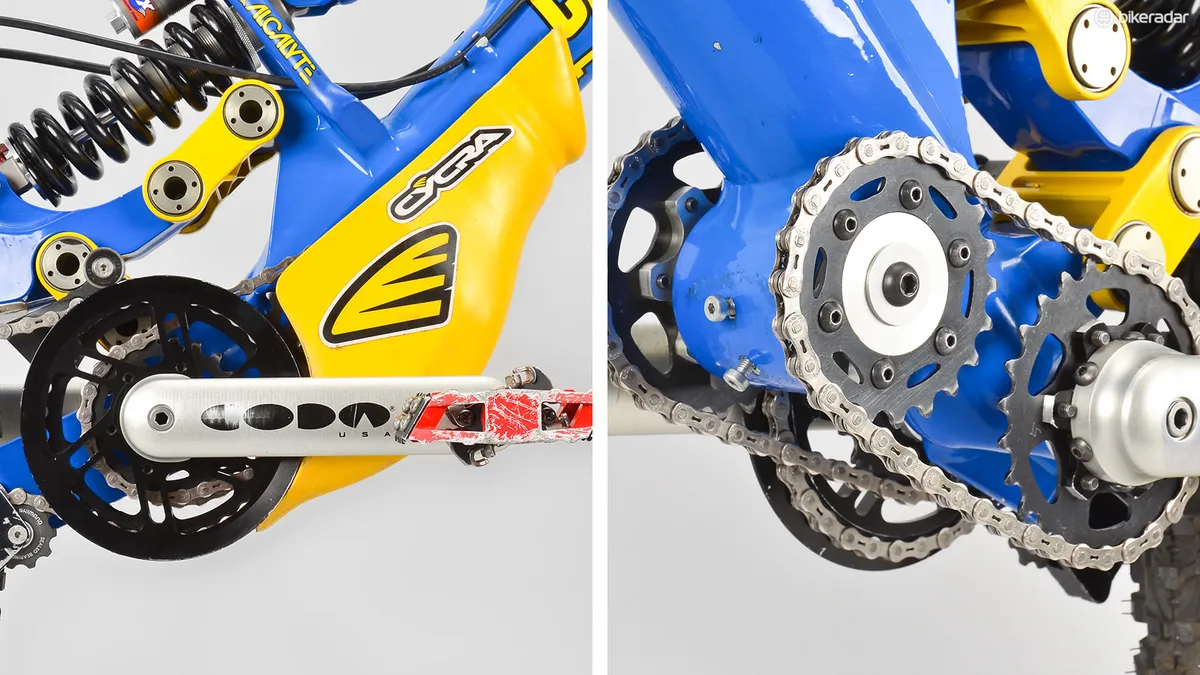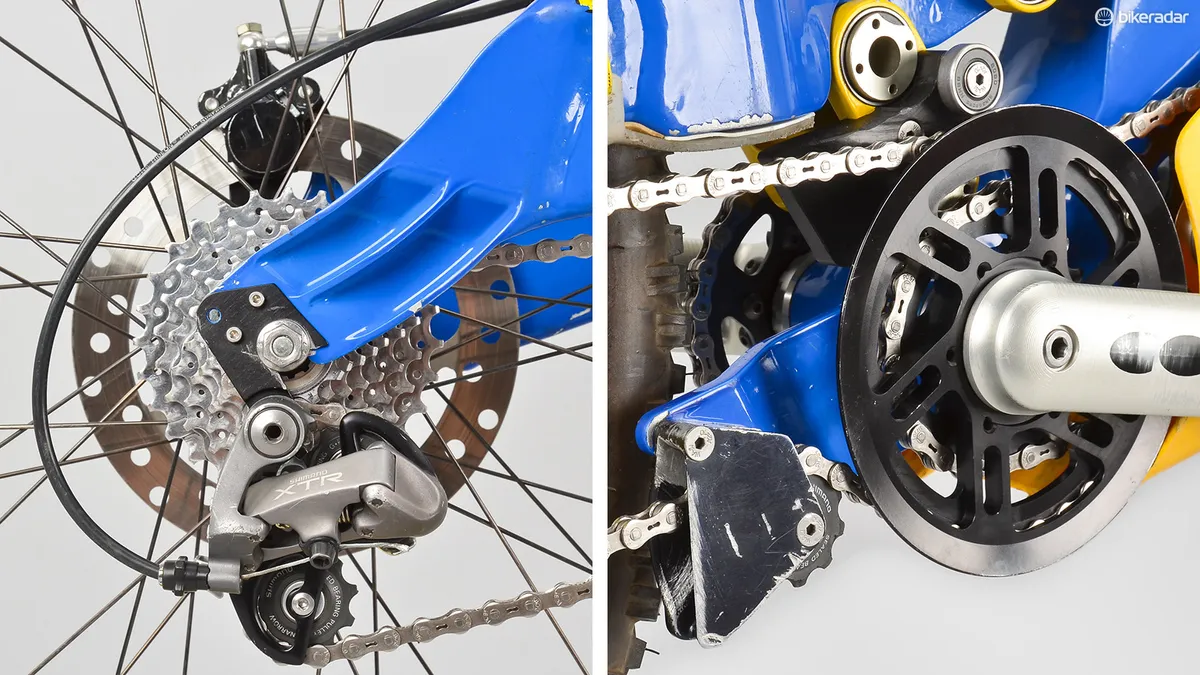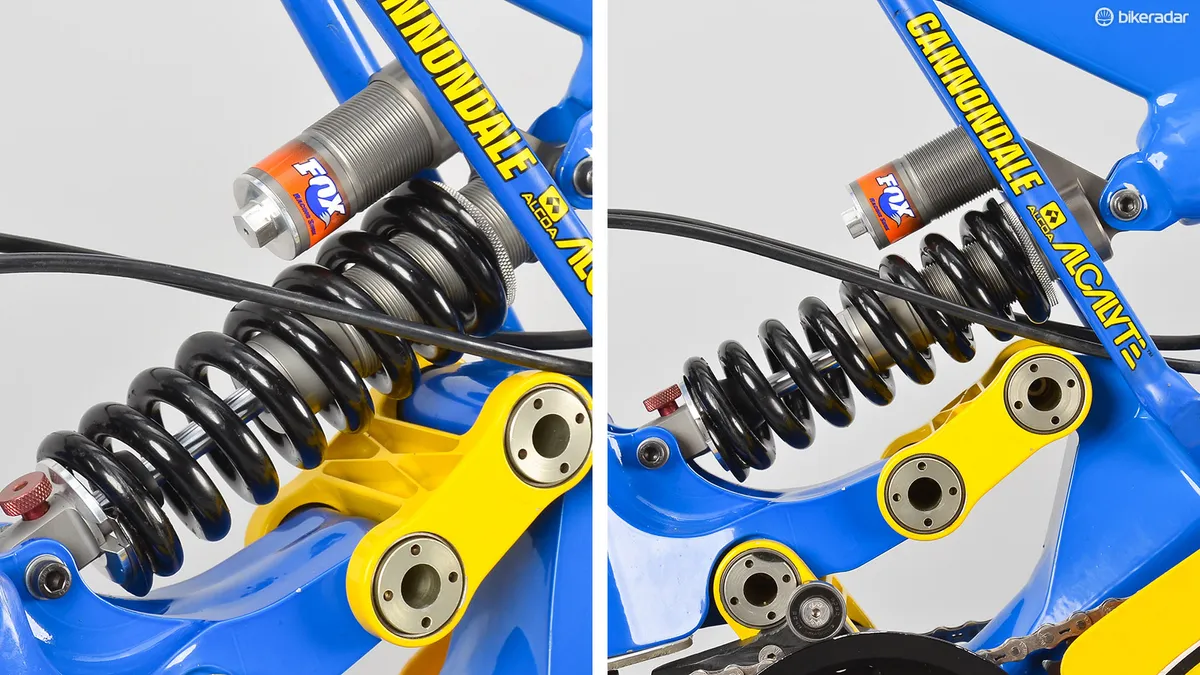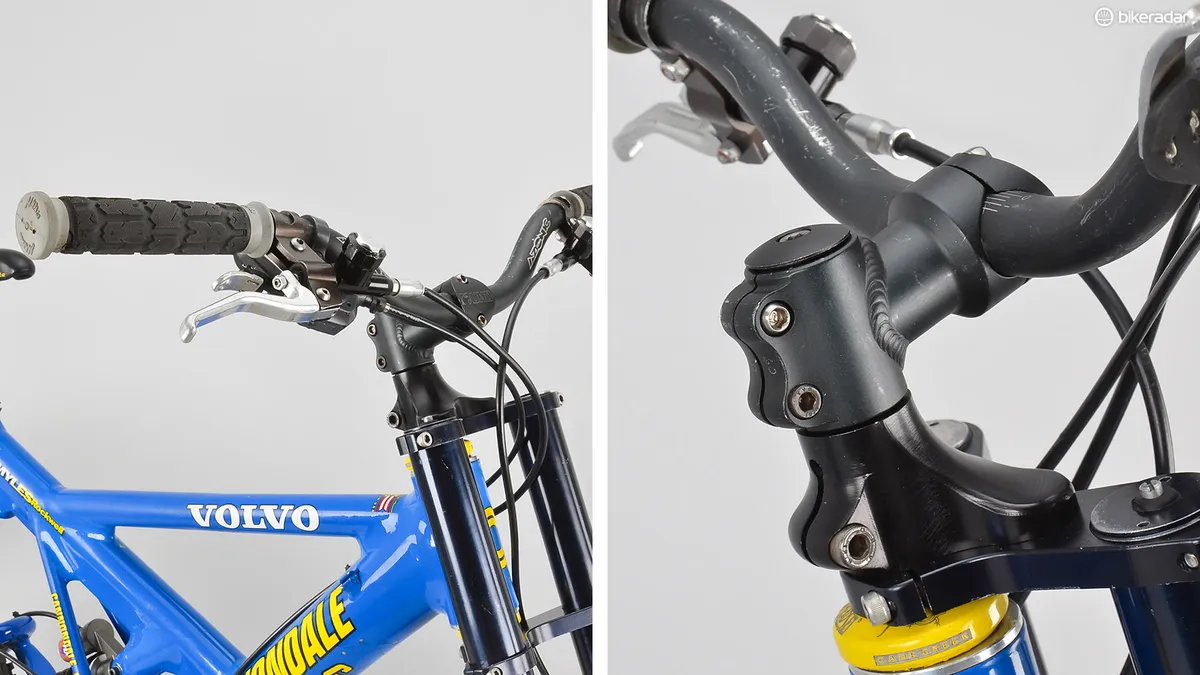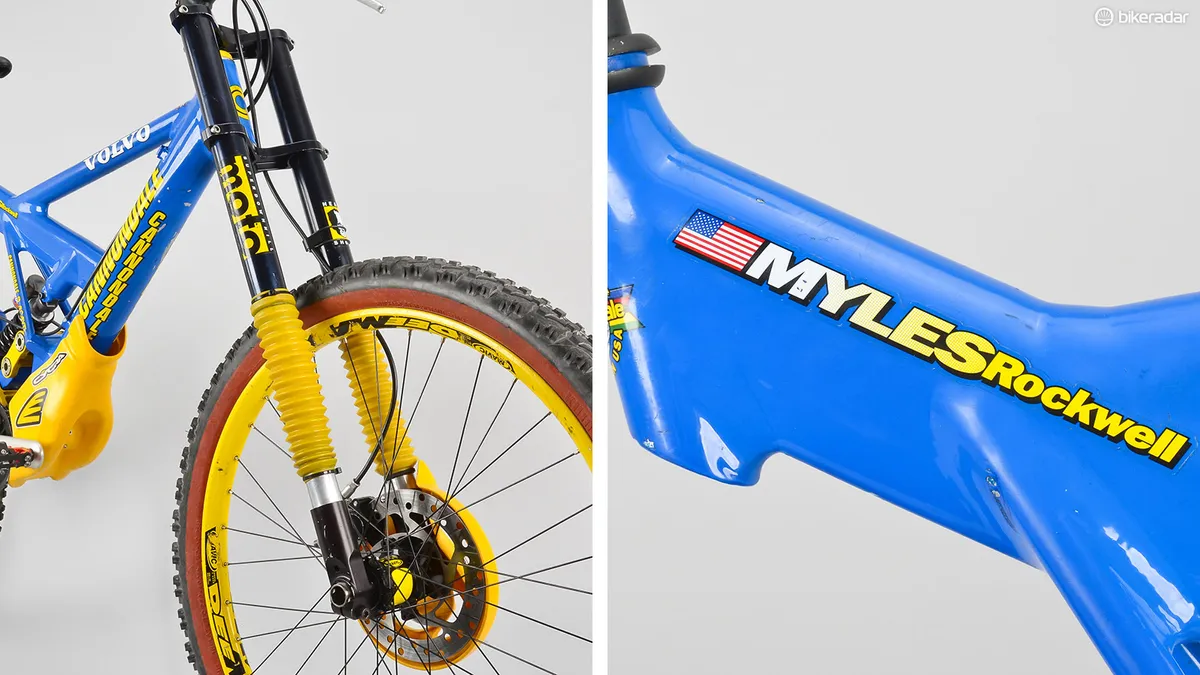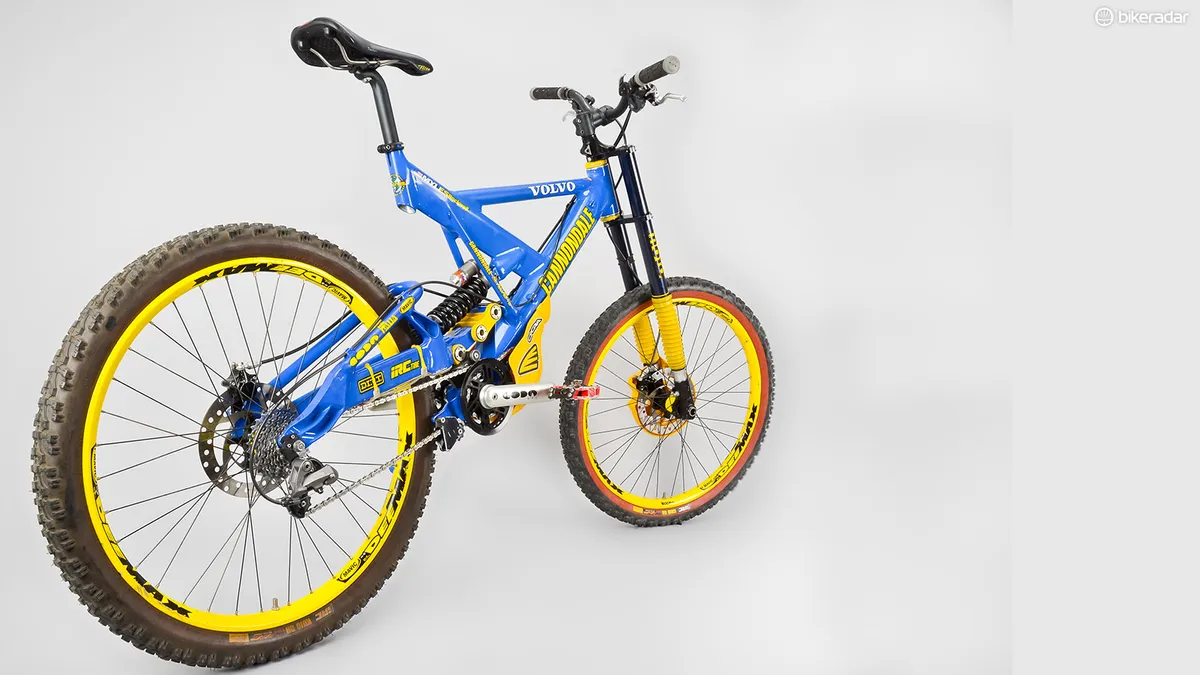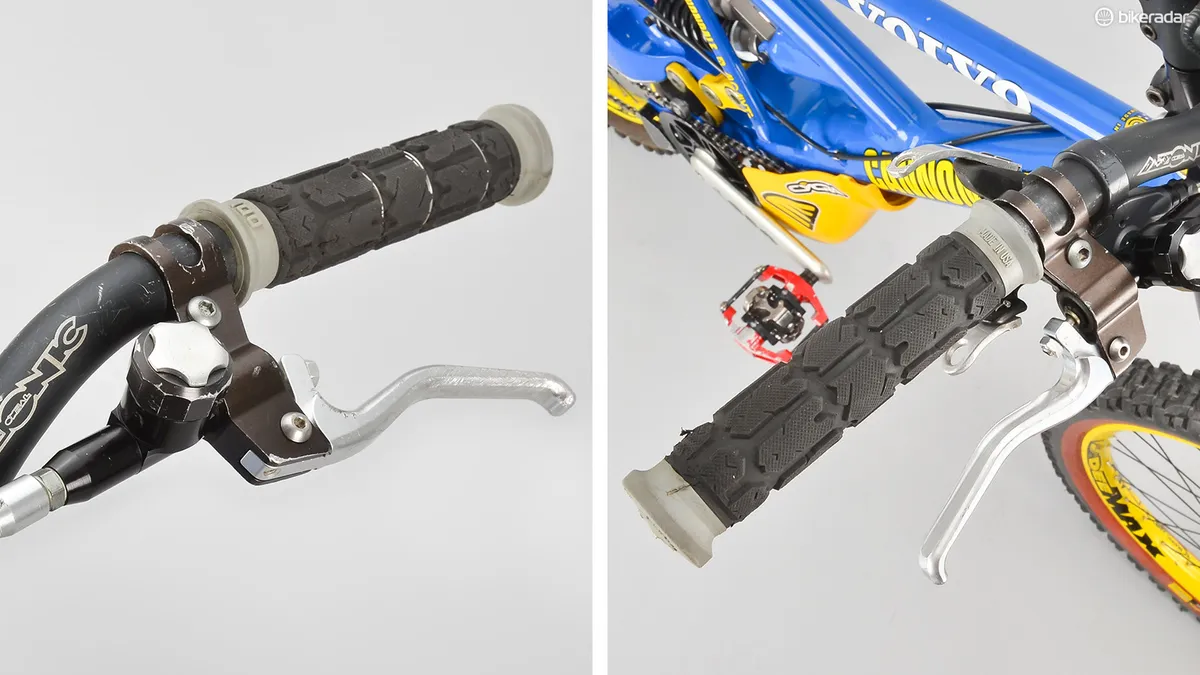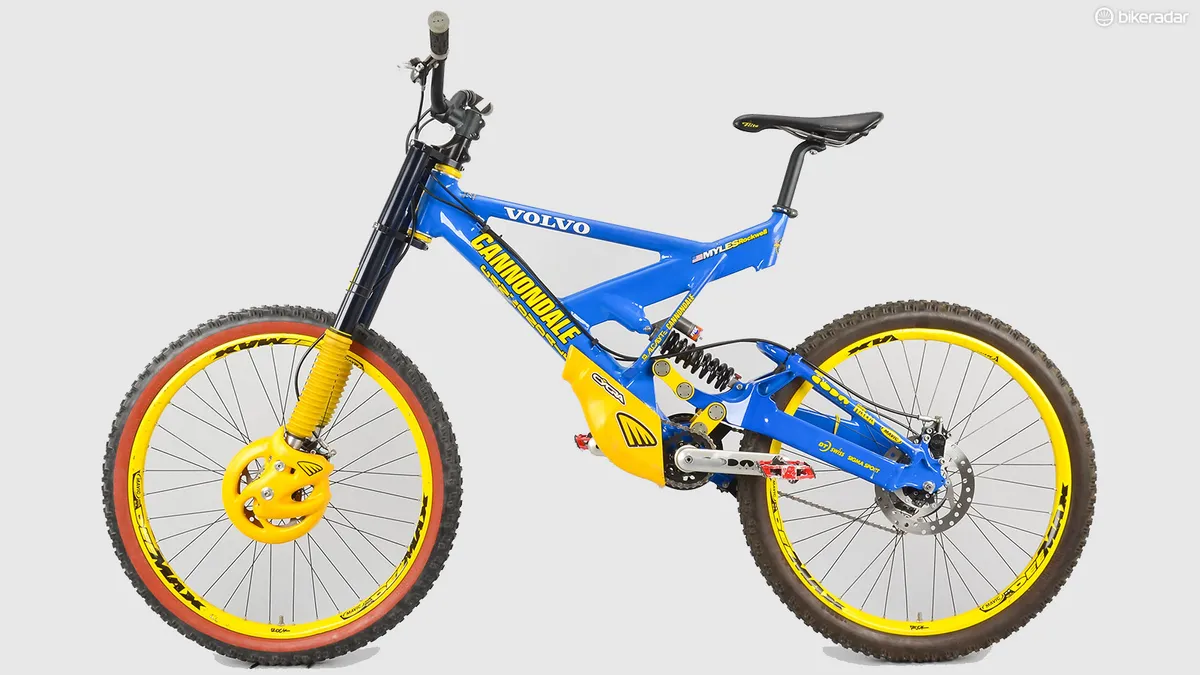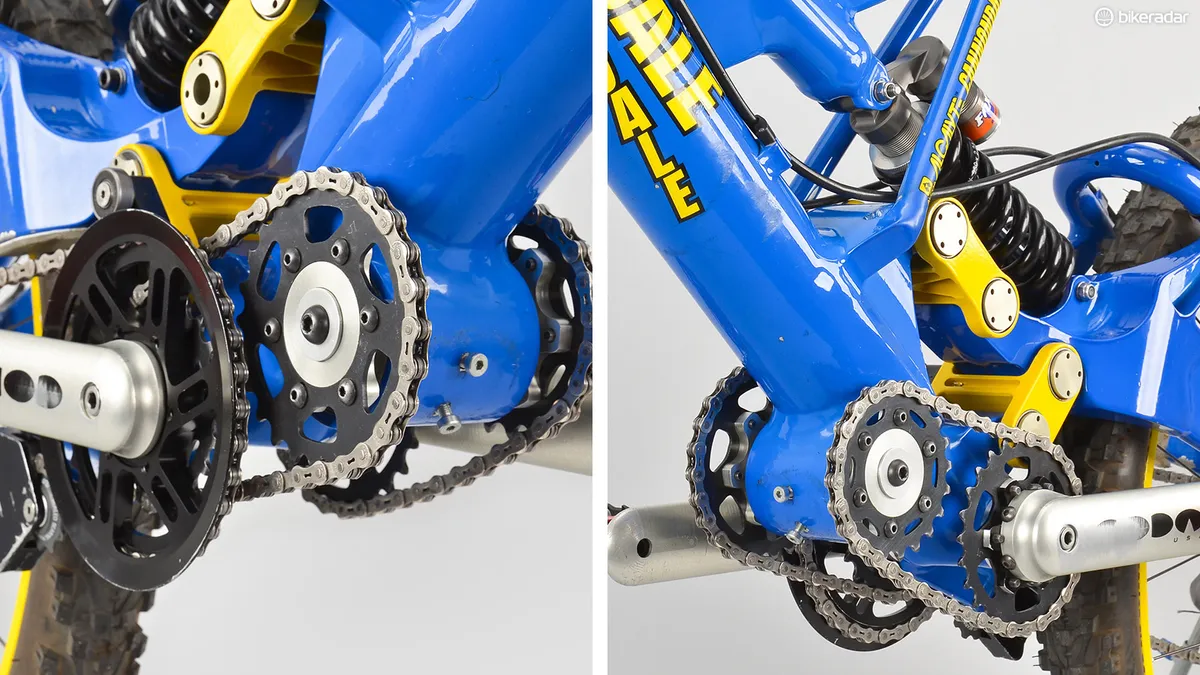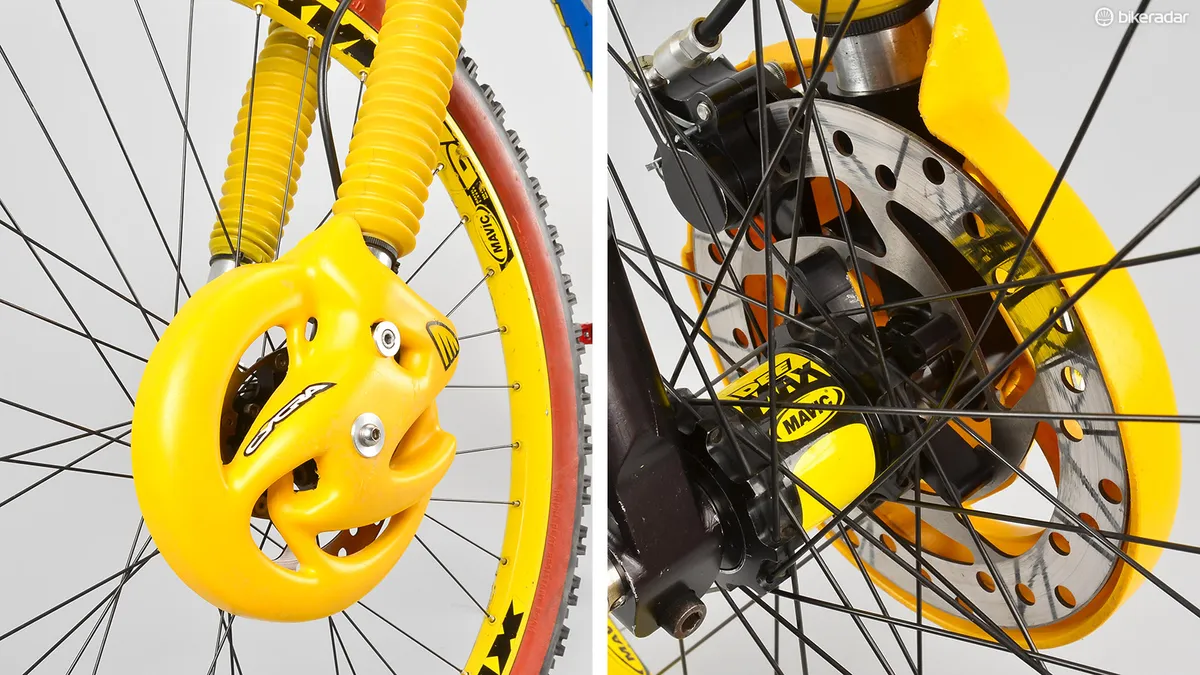Before the advent of platform valving in rear shocks, bicycle frame engineers went to all sorts of efforts to build pedalling efficiency directly into the suspension design. Few bikes exemplify those efforts better than the Cannondale Fulcrum DH used on the World Cup downhill circuit in 1998.
World Cup downhill racing was a different beast 17 years ago. The tracks were nearly twice as long as today’s shorter and more intense efforts, and there was significantly more pedalling required. Rear shocks were much more primitive in their internal designs, too, offering little to no help in terms of keeping the back ends from flailing about when racers had to put the power down.
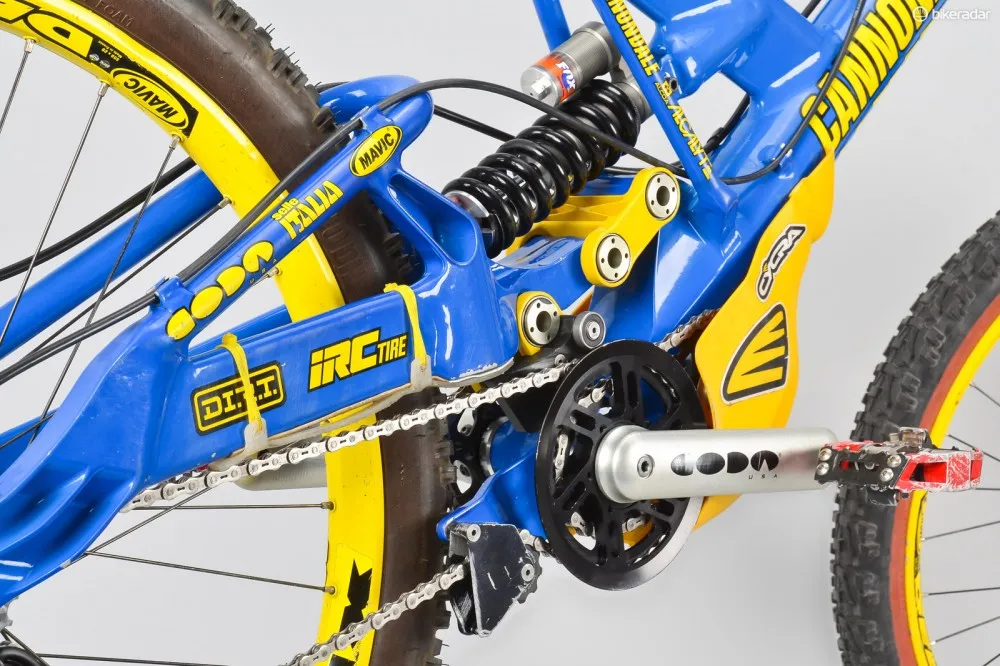
The wide range of courses also required a similarly broad selection of chainrings, which posed yet another set of challenges for suspension engineers.
Cannondale was at the height of its glory days in the late 1990s and the company adopted an unquestionably radical approach to the problem at hand. Unwilling to accept the kinematic compromises of multiple chainring sizes, Cannondale instead developed a complex jackshaft drive system for the team-only Fulcrum DH frame that used the same chainring no matter what.

With the chainline now a constant, the suspension engineers then designed a short dual-link rear end with roughly 6in of travel and an axle path that trended rearward toward the end of the stroke.
The jackshaft system was unquestionably complex, requiring three separate chains, four additional cogs, an army of bolts and bearings, and even an eccentric bottom bracket borrowed from a tandem. Pedal power was transferred from the left crankarm through a short section of chain to a cog on the jackshaft. From there, another short chain ran from the right side of the jackshaft to a secondary chainring that was bolted to the primary chainring, which ultimately drove the rear wheel.
And since it was the left chainring that actually transferred rider torque – not the driveside one as usual – the one on the right side merely rotated about the bottom bracket spindle on a pair of sealed cartridge bearings.
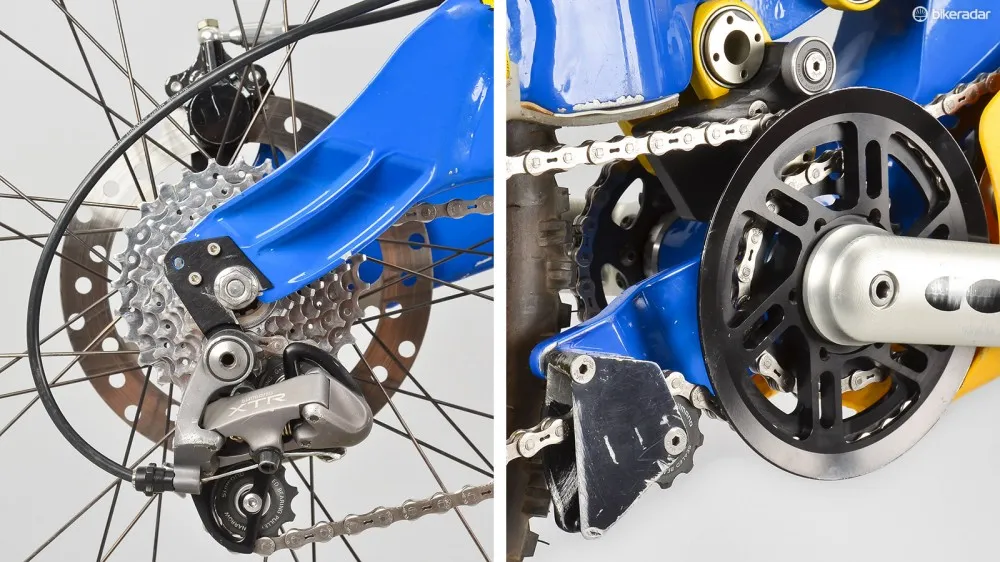
“The goal was to have suspension that was the best you could make it but still have it pedal well,” said Doug Dalton, who currently works for SRAM but was the lead team mechanic on Cannondale's downhill programme during the late 1990s. “That’s really why we had that whole drive system. It was just to make sure the rear suspension was optimised around a single, specific gear.”
The drive system wasn’t the only area of innovation, either.
Up front, Cannondale adapted its Headshok suspension fork into the dual-crown Moto DH, which used eight sets of needle bearings and square-profile stanchions to produce far more torsional stiffness than typical inverted fork designs. The oversized front end also featured interchangeable cups that allowed for adjustable head tube angle – more than 10 years before Cane Creek introduced its AngleSet.

Although effective, all of these innovations certainly had their downsides.
For one, changing gear ratios on the jackshaft system took even the seasoned team mechanics about 25 minutes. The needle bearings in the fork had a tendency to migrate, too, so they had to be ‘reset’ up to three times a day in order to restore the full travel.
Moreover, all that additional hardware made the bikes seriously heavy. Dalton said the bikes were nearly 23kg (50lb) in total – almost 7kg (15lb) heavier than top downhill racers today. Finally, the bikes were outrageously expensive to produce. Cannondale apparently never had any intention of actually bringing the Fulcrum DH to market – which would have helped offset the costs – and Dalton estimates that each one cost Cannondale between US$20,000 and US$30,000 to make (and that was in 1998).
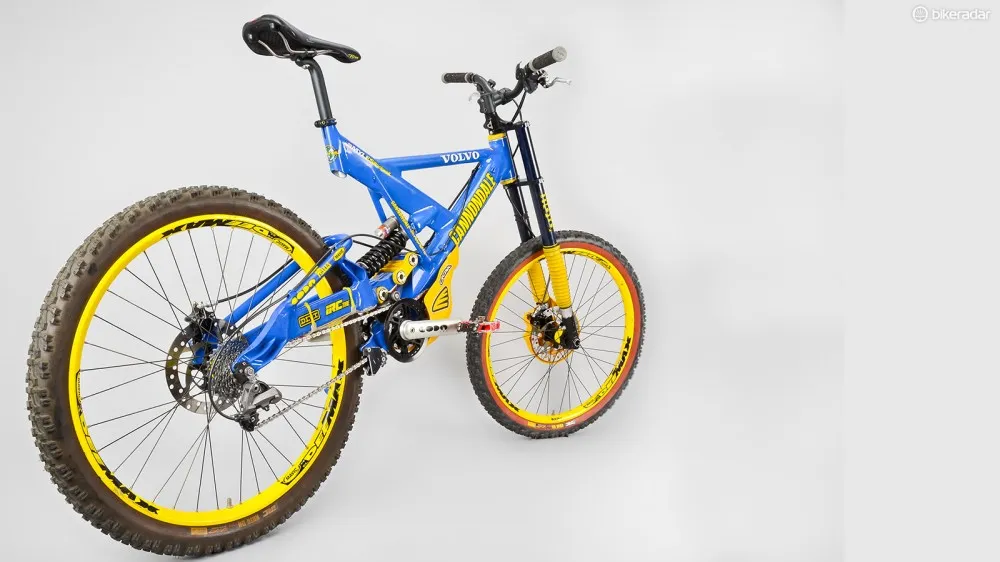
It’s entirely possible that Cannondale might have refined the Fulcrum DH in later years. Unfortunately, the programme was cancelled after just two years.
“The next year, the World Cup went live on Eurosport so all of the tracks went down to around three-and-a- half to four-and-a-half minutes instead of the big, six-and-a-half minute Euro, big-dog shredding courses,” Dalton said. “That Fulcrum DH was designed for big, wide-open, amazing tracks. Now we were going into these shorter and faster tracks. That’s why the next year we went for similar travel but went as light as we could. That’s when Gemini was born.”
According to Dalton, Cannondale ultimately made less than a dozen Fulcrum DH machines in total, each of which is a stunning snapshot of how things used to be.
Special thanks to the folks at The Pro's Closet, who will soon open up a museum of noteworthy vintage bikes at their headquarters in Boulder, Colorado.
Complete bike specifications
- Frame: 1998 Cannondale Fulcrum DH, 6in travel
- Fork: Cannondale Moto 150, 6in travel
- Headset: Cane Creek Aheadset w/ custom adjustable-angle head tube inserts
- Stem: Kalloy Uno
- Handlebars: Azonic aluminium riser
- Grips: ODI Rogue
- Front brake: Hope DH
- Rear brake: Hope DH
- Brake levers: Hope DH
- Chain guide: Cannondale Fulcrum DH custom
- Rear derailleur: Shimano XTR RD-M950-SS
- Shift lever: Shimano XTR Rapidfire Plus SL-M950 w/ custom paddle extensions
- Cassette: Shimano Deore XT CS-M737, 11-28T
- Chain: Sachs PC-91
- Crankset: Cannondale CODA Magic custom
- Bottom bracket: Cannondale CODA Magic, tandem eccentric
- Wheels: Mavic DeeMax
- Front tyre: IRC Kujo DH, 26 x 2.35in, custom tubeless setup
- Rear tyre: IRC Kujo DH, 26 x 2.35in, custom tubeless setup
- Saddle: Selle Italia Flite
- Seatpost: Kalloy
- Pedals: Shimano DX PD-M636
- Other accessories: Custom stem riser, custom Cycra moulded front disc brake cover and drivetrain cover

